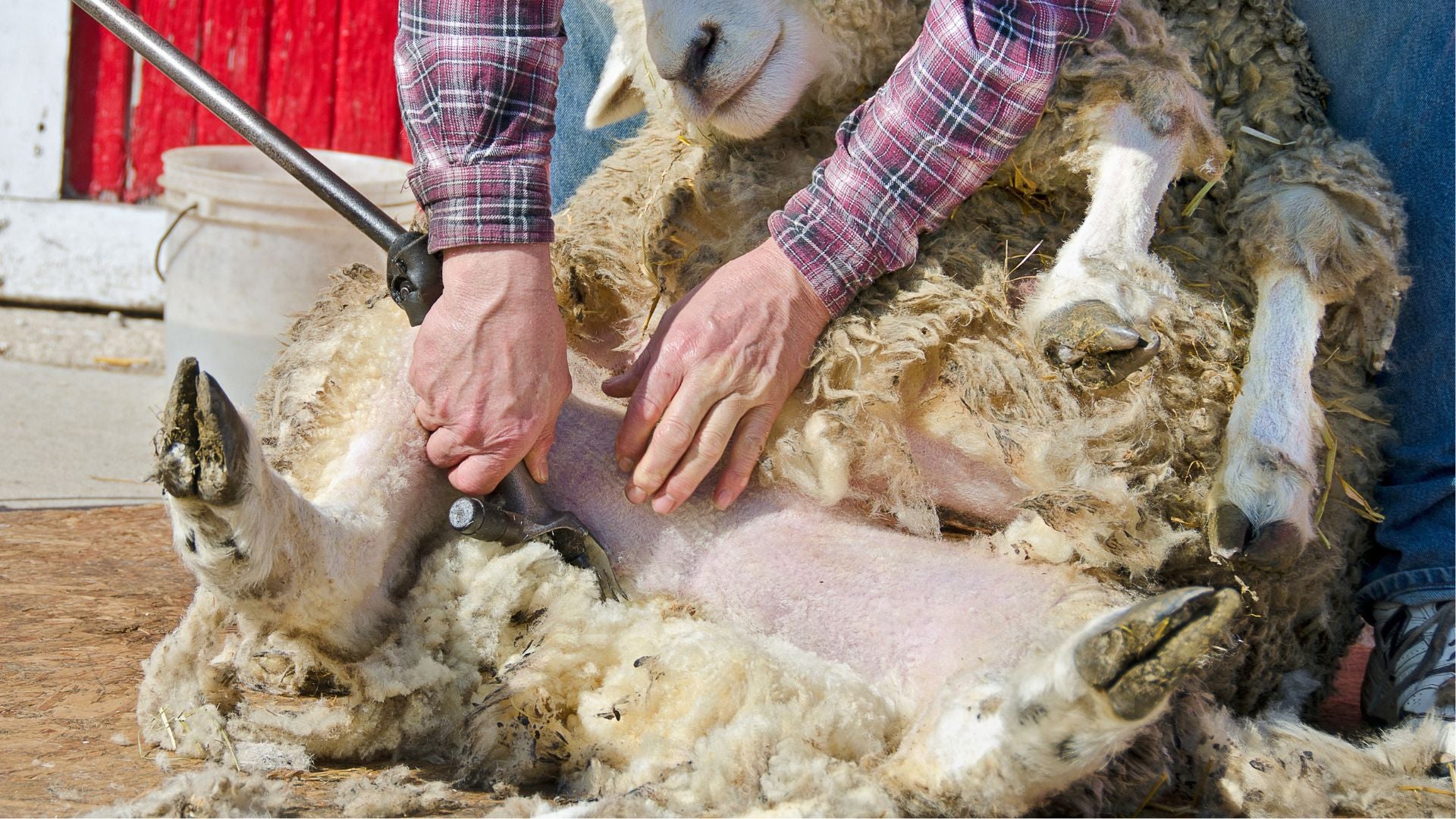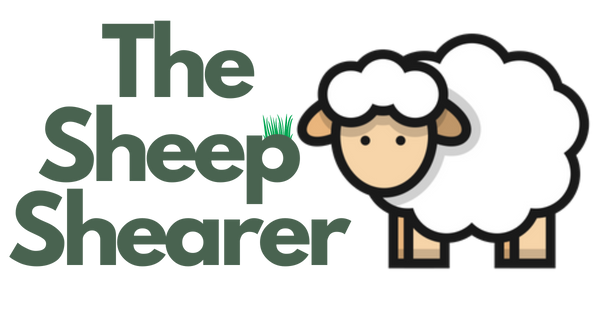Crutching
Crutching sheep is a similar process to shearing, but it involves trimming the wool from around the sheep's rear end and legs. This is done primarily to improve the hygiene of the sheep and prevent issues such as fly strike, which can be particularly problematic in the warmer months.
In order to crutch your sheep efficiently and without hassle, I use a mobile battery-powered shearing machine. All I ask is that they are ready on a flat area in a relatively small pen to make them easy to catch without putting any unnecessary stress on them. I leave the wool in a tidy pile for you outside of the pen.
Belly Crutching Sheep
Instead of shearing in the winter a popular alternative is removing a full or half belly above the udder and the crutch, leaving the rest of the coat on. This is done to remove the wool from around the ewes udder so that it is much easier for newborn lambs to find the teat. Eliminating the chance of the lamb mistakingly suckling on wool around the teat.

Benefits of Crutching:
Ease of Lambing and Breeding Management: Crutching facilitates easier lambing and breeding management. Clearing the wool around the hindquarters allows better access for lambs during birth, reducing the risk of complications and improving lamb survival rates. Additionally, crutching makes it easier to visually assess the condition of the ewes and identify any reproductive issues or health concerns.
Fly Strike Prevention: Crutching is primarily performed to reduce the risk of fly strike, a condition where flies lay their eggs on soiled or damp wool, leading to maggot infestation. By removing the wool from the rear end, which is prone to soiling, crutching creates a cleaner and drier area that is less attractive to flies. This significantly reduces the likelihood of fly strike occurrence and protects the sheep from the painful and potentially fatal effects of maggot infestations.
Hygiene and Health: Removing soiled and dirty wool through crutching promotes better hygiene and overall health in the flock. Soiled wool can harbor bacteria and parasites, leading to skin conditions and infections. Crutching helps prevent the buildup of faecal matter and urine in the wool, minimising the risk of skin issues and improving the general cleanliness of the sheep.
Overall, crutching is an essential practice in sheep farming that offers significant benefits in terms of fly strike prevention, hygiene, lambing management, and shearing efficiency. It is typically performed on an as-needed basis, depending on the specific requirements of the flock and environmental conditions.
Please note: I will not crutch your sheep if they have been treated with Maggo. Maggo is extremely toxic, which can cause organ damage and cancer with repeat exposure. This is clearly outlined in their safety data sheet which you can find in this link.
